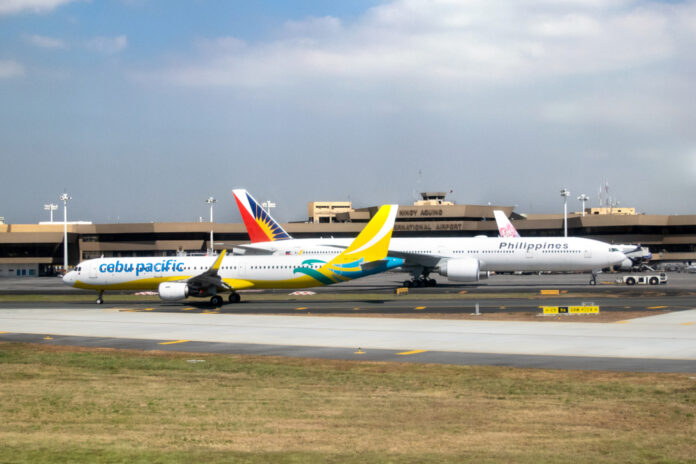The Philippine air travel industry soared in 2023, with passenger numbers returning to pre-pandemic levels, according to the Civil Aeronautics Board (CAB).
Data from the CAB show domestic passenger traffic reaching 28.96 million, up 28 percent from 22.50 million in 2022.
Budget carrier Cebu Pacific remain the country’s leading domestic passenger ferry with 12.86 million last year, higher than only 11.39 million in 2022.
This was followed by PAL Express which ferried 7.77 million domestic passengers, Philippines AirAsia with 4.8 million domestic passengers, Cebgo, 2.24 million domestic passengers and Philippine Airlines with 734,249 domestic passengers.
Charter companies AirSwift Transport Inc. carried 350,458 domestic passengers and Royal Air Charter Services Inc. with 104,473 domestic passengers. Both cater to holidaying passengers to and from famous beach destinations in the country and some of the region’s more accessible cities like Hong Kong and Taipei.
International passenger traffic aggregated 21.21 million last year, higher from 9.83 million in 2022.
Of the total, the domestic airlines carried 9.75 million international passengers while foreign carriers flew 11.46 million passengers.
PAL carried the most international passengers with 5.52 million, followed by Cebu Pacific with 2.98 million passengers, Philippines AirAsia, 1.14 million passengers and Royal Air Charter Service with 94,205 passengers.
Meanwhile, domestic cargo traffic reached 237.53 million kilograms last year from 195.19 million kilos in 2022.
Cebu Pacific carried 92.01 million kilos of cargo, followed by PAL Express with 85.01 million kilos, Philippines Air Asia, 26.29 million kilos, PAL, 24.59 million kilos and Cebgo with 1.64 million kilos.







